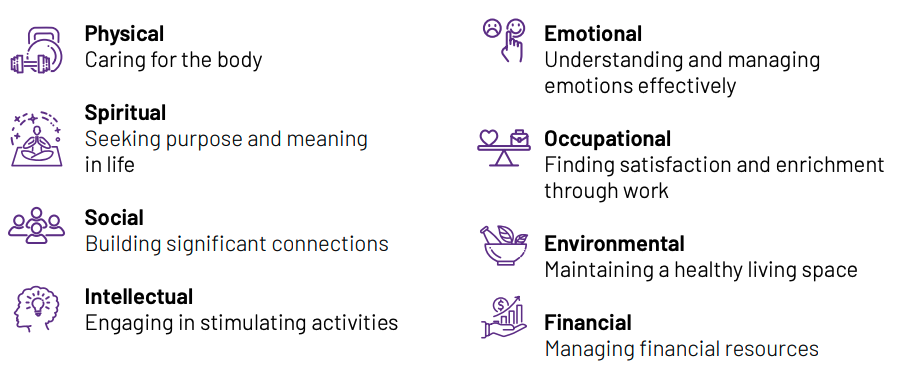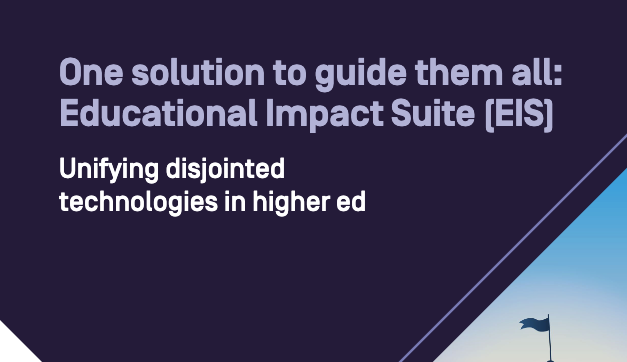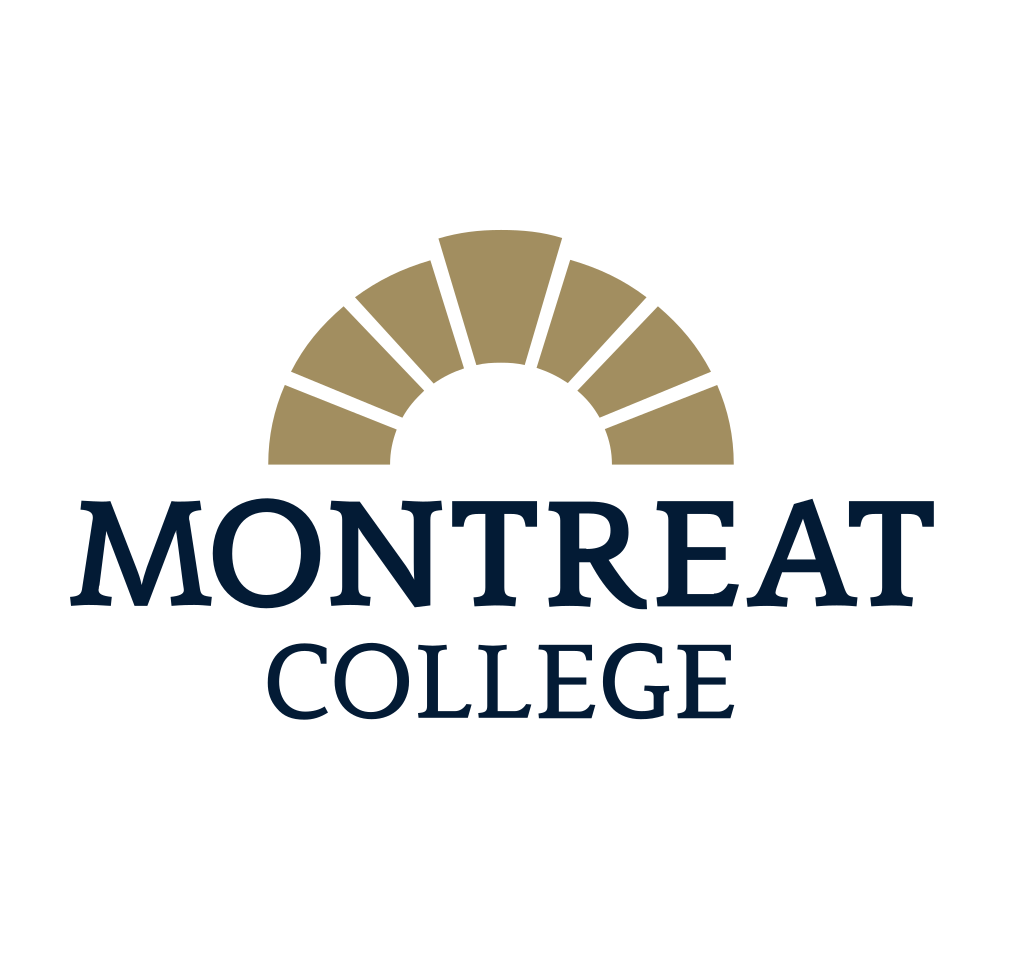The AI advantage: Revolutionizing higher ed for student thriving
As the American public’s skepticism over the value of a college degree grows, and as total enrollment across two-year and four-year institutions has consistently waned since 2010, it is fair to say that U.S. higher education is in a state of crisis. In the past two decades, hundreds of colleges and thousands of campuses have closed — and more will shutter in the coming years.
Facing such increasing instability, many higher education institutions have attempted to differentiate themselves from each other by outlining the tangible benefits they offer students. The growing accessibility and adoption of artificial intelligence (AI) adds to this sense of instability. Educators fear that AI — and generative AI in particular — could limit the effectiveness of their programs, negatively impacting student success. As a result, educators, administrators, and institutions are asking themselves important questions like:
How should we define student growth and achievement? What are the most effective ways to measure and promote them? And where does AI fit in?
This eBook strives to answer these questions as we explore the intersection of AI, higher education, and the future of student success.
“Everything I had worked for, all my years of study, had been to purchase for myself this one privilege: to see and experience more truths than those given to me by my father, and to use those truths to construct my own mind. I had come to believe that the ability to evaluate many ideas, many histories, many points of view, was at the heart of what it means to self-create.”
Tara Westover, Educated
Learn more about The AI advantage: Revolutionizing higher ed for student thriving
Download Now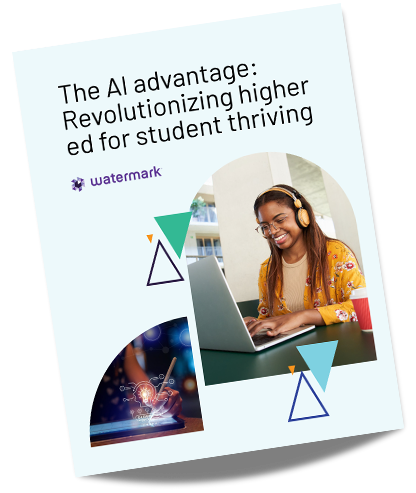


Trying to define student success is tricky. Some institutions focus on boosting classroom engagement and ensuring everyone has equal access to mentorship. At other institutions, it’s more about hitting specific graduation targets. Or is the true measure of student success something closer to what Tara Westover articulates in her book Educated, defined by students’ access to knowledge and the freedom to self-create?
Of course, the answer is that student success is all of these and more. Regardless of which definition you like best, there are shared pillars that are helpful to understand. Let’s explore.
Student success isn’t just about numbers. It’s about fostering an environment where students can thrive in every aspect of their lives. That means paying attention to four pillars of student success that Inside Higher Ed has defined based on existing literature, their prior news coverage, and expert interviews:
- Academic life
Students should have ample opportunities to learn in the classroom and through fieldwork, internships, or off-campus jobs. - Health and wellness
An environment that promotes proper mental and physical health is imperative for students to be able to focus on their studies and future careers. - The college experience
Opportunities to join clubs, sports teams, and campus organizations are important factors in student success. - Life after college
Students should be provided with transferable skills throughout their program and graduate college with experience that seamlessly transitions them into the workforce.
So, let’s look into how we can navigate the intersection of student success and AI. Together, we’ll uncover how to harness the potential of AI while staying true to the core mission of helping students thrive.
The idea of artificial intelligence has been around for over a century (at least). But the reality of AI didn’t come into being until the 1950s. In the years since, there have been starts and stops in its development, but things have really picked up since the 1990s.
To start, let’s talk about the difference between traditional AI, which has been around for longer, and the recently developed generative AI. In short: traditional AI can be thought of as focusing on one area of expertise, while generative AI creates something new. Picture traditional AI as a seasoned scientist and generative AI as a young, but prolific, artist.
Traditional AI, also known as “weak AI” or “narrow AI,” typically relies on predefined rules and algorithms to perform specific tasks. Generative AI, aka “strong AI” or “creative AI,” creates new content by learning patterns from existing data, allowing it to generate original output.
Generative AI, like GPT models (a type of artificial intelligence developed by the AI research and deployment company OpenAI), can generate text, images, and even music, while traditional AI is more task-specific and may be focused on skills such as image recognition or language translation. Generative AI excels in creativity and adaptability, whereas traditional AI zeros in on structured problem-solving within defined parameters.
What can AI do?
When it comes to the intersection of academia and student success, what exactly can AI do? The answer is: a lot. Below are just a handful of examples.
Identify students at risk of dropping out or in need of targeted interventions
How? Predictive analytics.
What? Predictive analytics leverages historical data and statistical algorithms to forecast future events or behaviors, aiding informed decisionmaking and proactive strategies.
Recommend optimal intervention strategies tailored to individual students
How? Predictive analytics.
What? Prescriptive analytics recommends actions based on predictive analysis, utilizing data, algorithms, and optimization techniques to give actionable insights for decision-making.
Offer targeted, streamlined communications and individualized learning experiences
How? Learning analytics.
What? Learning analytics examines educational data to understand and enhance learning processes, using data mining, statistical analysis, and visualization to inform educational strategies and interventions.
Provide increasingly sophisticated, always-on student support across a variety of services
How? Chatbots.
What? Chatbots are artificial intelligence programs designed to interact with users through text or speech, providing assistance and information while conducting tasks autonomously.

How? Adaptive learning.
What? Adaptive learning, also known as adaptive teaching, is an educational approach that uses technology to personalize learning experiences based on individual student needs, progress, and preferences.
Give feedback at scale while, ideally, preventing human bias
How? Automated assessment and feedback.
What? Automated assessment and feedback involve using technology to evaluate student performance and provide instant feedback, enhancing learning efficiency and effectiveness in educational settings.
Foster a more engaging, motivating, and effective learning environment
How? Gamification, interactives, and similar strategies.
What? Gamification and interactives in AI involve integrating game-like elements and interactive features to enhance user engagement, learning, and interaction with AI systems and applications.
What can’t AI do?

Provide a stand-in for human connection
Colleges and universities should prioritize holistic student success over solely relying on metrics, recognizing that artificial intelligence cannot replace the importance of person-toperson interactions.
“It’s important to remember that AI is really not a silver bullet for student success,” cautioned David Crandall, PhD, of Indiana University Bloomington. “It doesn’t offer the human connection that you need for things like empathy and support and helping deal with complicated situations.The future is not about AI replacing people by any means. It’s really about how to help people do their jobs better — AI and human collaboration.”
Guarantee an unbiased perspective
Artificial intelligence lacks the ability to guarantee impartiality, often replicating (and potentially amplifying) human prejudices. That said, its biases may be trackable, aiding in their identification and rectification.
“People are also biased,” said Crandall. “They’re biased in hiring decisions, admissions decisions, and so on. But with AI, you can, at least in theory, look underneath the hood and see the bias. Whereas with people it’s really hard.”
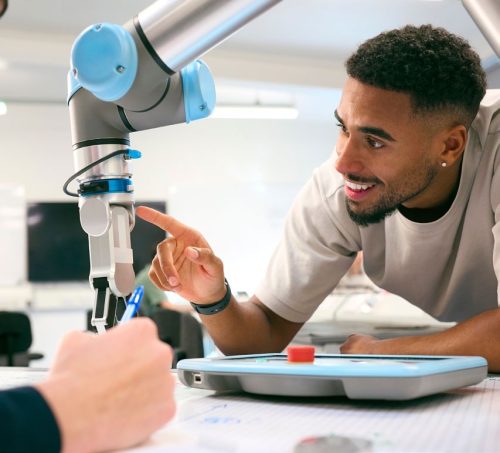
Unclear delineation of responsibility for AI strategy may indicate miscommunications within the organization, hindering effective implementation. Kathe Pelletier, EdD, of EDUCAUSE pointed to a “weird” finding from the organization’s recent report: respondents, when asked about who was responsible for AI strategy at their institution, were most likely to indicate their own role.
“It was almost evenly distributed across leaders, frontline employees, managers, and directors,” said Pelletier. “To us, that’s signaling a breakdown in communication and clarity.” While it may indeed be true that several groups within an institution will play pivotal roles in AI strategy, Pelettier said, the efforts must not be disconnected or they risk undoing one another.
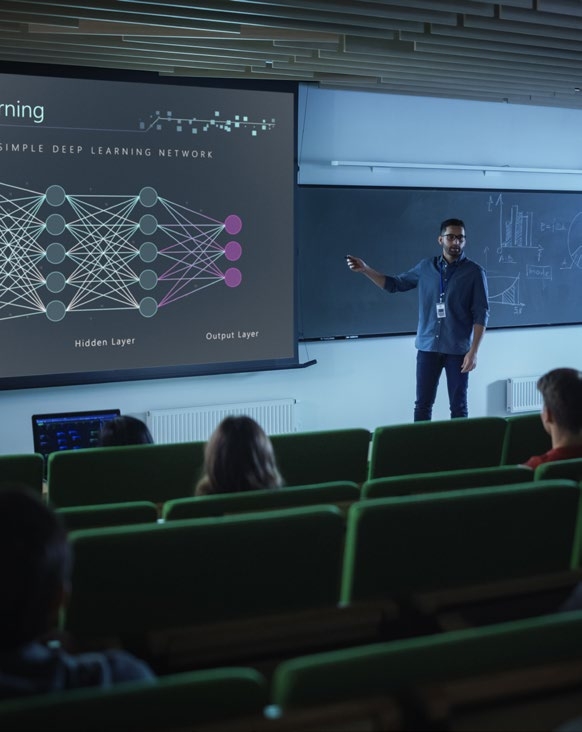
Finally, AI cannot serve as a substitute for critical thinking, creativity, or innovation.
“As impressive as AI technology is, it’s actually kind of simple,” said Crandall. “It’s about finding patterns in training data. That means that it’s going to be really good at common cases — but less good at rare cases, involving the students who are sort of outliers in their community or in the university.”
Likewise, students must be reminded that the kind of self-creation they should aspire to requires trial and error. There are no shortcuts to thinking hard. As always, technology is an enabler, not a driver, of institutional and personal transformation.
AI holds a lot of potential to transform student success, including through adaptive learning platforms and personalized feedback. But the use of AI in higher ed, particularly generative AI, remains a question up for debate in many institutions. One influential report from Cornell University proposes that faculty adopt one of three policy options regarding the use of generative AI in student coursework, “depending on the learning objectives of the course or assignment”: prohibit, allow with attribution, or encourage.
It’s worth noting, however, that this question may be beside the point. When looking at the reality of AI’s pervasiveness, it’s clear that institutions must devote more energy to grappling with the question of how rather than whether AI should be used. Student uptake of AI in academics already outpaces faculty members significantly. According to some research, nearly half of college students are using AI tools in the classroom, compared to about a quarter of faculty members.
Academic life
Professors are still increasingly incorporating AI tools in academics, despite varying perspectives on these tools’ efficacy in helping to achieve learning outcomes. Some professors still have many understandable reservations and are dragging their feet; others are personally crafting prompt engineering.
Just a few notable developments include Harvard’s recent rollout of a ChatGPT-enabled teaching assistant in a popular computer science course, alongside the University of Michigan’s similar U-M GPT and U-M Maizey, which allow professors to train an AI teaching assistant in a course’s content so that students can tap into that knowledge later when they have questions. Ivy Tech, meanwhile, employed machine learning — another application of AI — to parse millions of student data points captured through their LMS to proactively identify and support at-risk students. Now, they’re able to predict course grades with an impressive 80 percent accuracy rate, enabling timely student interventions.
Health and wellness
Institutions that want to aim for a holistic approach to student success should hold in mind the eight-dimensional wellness model developed by Dr. Margaret (Peggy) Swarbrick. There are eight focus areas:
AI-powered communications and analytics can provide essential clues about how students are faring in these areas. Insights gleaned from a recent examination of 1 million student chatbot messages collected from 150,000 students across 89 institutions during one academic year, for example, reveal some important takeaways. Good practices include: early check-ins, enhancing confidence and fostering connections, addressing basic needs, and prioritizing investment in student wellness. AI will continue to help pinpoint mental health challenges among college students, offering tailored assistance along the way.
The college experience
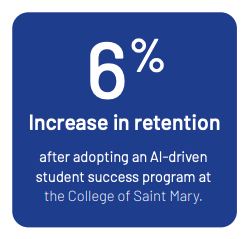
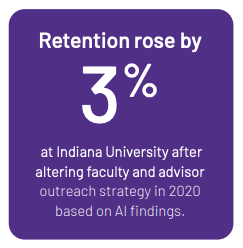
Life after college
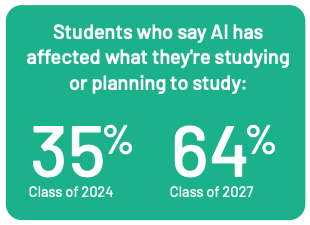
This trend extends across majors, with the majority of students advocating for their institutions to prepare them adequately for the AI-driven workplace. Furthermore, students are not only seeking practical AI training but also emphasizing the importance of ethical considerations, underscoring a desire for a balanced curriculum that imparts both core skills and ethical principles surrounding AI utilization.
“Data-informed decision-making provides opportunities to promote transparent governance; advance fairness and equity for faculty, students, and staff; and save money. We encourage university leaders to embrace more objective and transparent data-informed models for decision-making.” — Christine L. Borgman and Amy Brand, “Data blind: Universities lag in capturing and exploiting data”
So, what does all of this mean for higher education institutions? How can colleges and universities ensure that they are optimizing artificial intelligence to support student success while building data-informed strategy into their institutional DNA? Below, find some simple rules of thumb: The three Bs of using AI to maximize data for student success in higher ed.
1. Build a culture around AI on campus

Alleviating anxieties about AI use and promoting collaboration among various stakeholders is also important. The extent to which higher ed can benefit from AI leans heavily on the quality of the partnerships among providers, vendors, and institutions themselves.
2. Be transparent
Ensure transparency regarding the use of data and AI within your institution, and be ready to expound on both the purpose and methods employed. It is imperative for institutions to clarify to students the rationale behind data usage and demonstrate its relevance to them.
Allocate resources to comprehending the ethical implications inherent in data and AI usage, while also prioritizing security measures to safeguard data integrity. Additionally, be diligent about addressing concerns surrounding data privacy and biased algorithms, fostering a culture of trust and accountability within the institution.
3. Balance human touch and technology

Balancing the human touch with technology in higher ed goes beyond simply preserving face-to-face interactions. It includes encouraging faculty to challenge students to critically evaluate the pros and cons of using AI on assignments, as well as encouraging faculty to challenge themselves to build more intentional assignments that can’t so easily be completed using AI.
Additionally, institutions must leverage diverse data sources to build a comprehensive understanding of student success — and this means keeping an ear out even for observations from individuals who may not fit within the traditional student success model but who nevertheless come into regular contact with students, such as night custodial staff or resident advisors. After all, any cutting-edge strategy for supporting students will hold in mind that, even with the incredible advancements that AI promises, student success will always be everybody’s business.
This eBook is adapted from a webinar that we put on in partnership with Inside Higher Ed. Click here to view AI and student success | Real-world insights from higher ed on demand and dive into expert takeaways from the panelists:
- M’Hammed Abdous, Old Dominion University
- David Crandall, Indiana University Bloomington
- Will Miller, Embry-Riddle Aeronautical University
- Kathe Pelletier, EDUCAUSE

Browse our resource library
See how our tools are helping clients right now, get in-depth information on topics that matter, and stay up-to-date on trends in higher ed.







